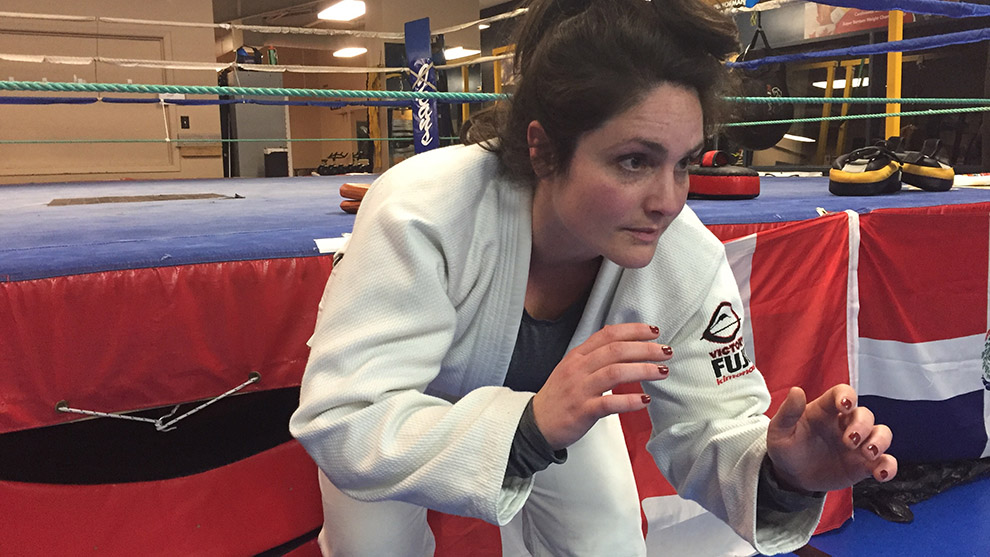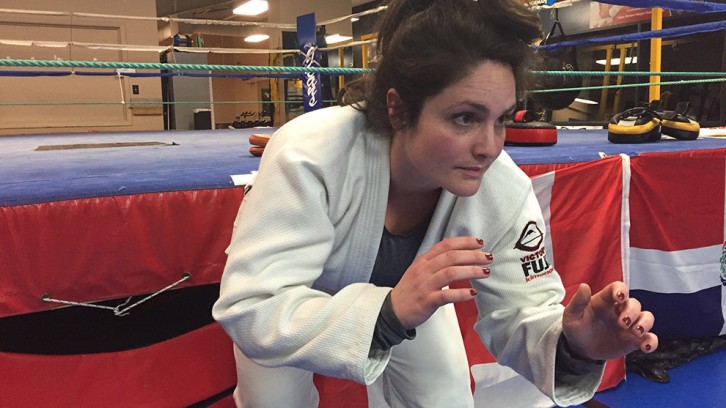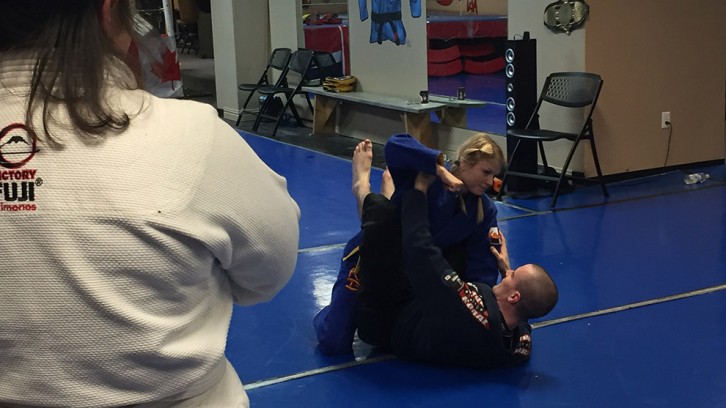Self-defence
Women combat sexual assault with martial arts
Self-defence both protection and a workout, student says

caption
Sarah Murphy shows her jiu-jitsu moves at Titan's Fitness Academy.
caption
Sarah Murphy shows her jiu-jitsu moves at Titans Fitness Academy.Sarah Murphy is learning how to grapple and fight on the ground. She says it is empowering.
“You feel strong,” she said. “Your body feels a little more in tune.”
Murphy is taking an all-women’s Brazilian jiu-jitsu class, a martial art that teaches people how to have leverage as a smaller person and defend themselves against a bigger attacker.
While Murphy was always into sports in high school, she had never tried martial arts before.
“This is way after I had my son, so I wanted to do something to get in better shape, and this with the self-defence aspect was like two birds, one stone,” she said. “You can get good exercise and learn a tool rather than just going to the gym.”
Murphy came across Brazilian jiu-jitsu through her friend Sarah Arsenault, who runs the class for women at Titans Fitness Academy.
Arsenault, who started out with weightlifting, said she got into self-defence about 11 or 12 years ago when she was robbed numerous times at gunpoint. She said that the second time she was robbed, the robber took her out back.
“I was standing there and I knew I was strong and could lift a lot of weight, but I didn’t know what I would do if he tried to sexually assault me or something like that.
“So now I feel like … I could probably defend myself a lot better and maybe disable him until I call the police,” Arsenault said.
In Brazilian jiu-jitsu, it’s a person’s skills that matter, not their size. Jonathan Gale, one of the coaches at Titans, said that while most people can throw a punch, few have really good instincts for what to do on the ground.
“Jiu-Jitsu is all on the ground,” he said. “It’s really about taking somebody and putting them where they’re very uncomfortable, where you’re very comfortable.”
Murphy considers it a way to protect herself.
“I think everyone, not even just women… has those moments in life where you’re going somewhere by yourself, or where it’s dark out and you’re walking home, even in your own house, that feeling of vulnerability and maybe you’re not safe in a moment.
“Doing something like this has really boosted my confidence and knowing that not necessarily you can beat everyone, but at least giving yourself a chance to get away,” Murphy said.

caption
Jonathan Gale and Sarah Arsenault demonstrate for the class as Sarah Murphy looks on.According to a 2015 Statistics Canada report, Nova Scotia had 519 police-reported sexual assaults last year, that is around 63 incidents per 100,000 people. The province had the highest sexual assault rate on the East Coast.
Arsenault has been teaching Brazilian jiu-jitsu for three years. She said there were up to eight regular students at one point, but now there are two.
However, there are other martial arts clubs and programs that teach women self-defence skills.
Melissa Martin teaches Women’s Awareness Survival Program, a self-defence program at Budocentral Martial Arts. It runs three to four times a year, with between 12 and 20 participants for each session.
Martin says it combines the psychological aspect of self-defence with physical techniques.
“Women would come in the first week and you could see their confidence is low,” she said. “But then even by the end of the first night, you could see that they’re walking a little taller, they’re standing with their chins up a little higher.”
In 2015, a study published in the New England Journal of Medicine found that learning self-defence decreased the risk of rape for female university students. Amongst women who had received training, 5.2 per cent were raped in the next year, compared to around 10 per cent of the control group who were given brochures.
“The risk is always there, but it’s how we respond to that risk,” Martin said.
